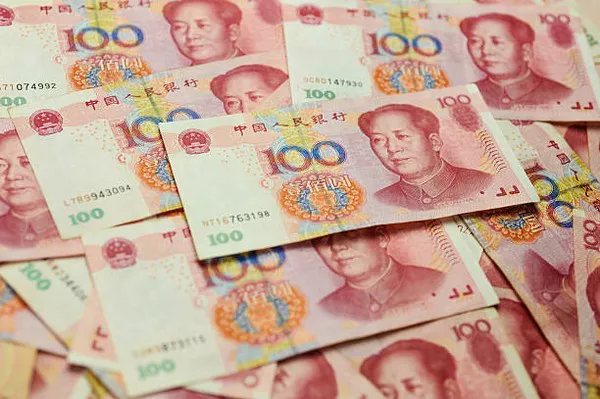The Chinese yuan, also known as the renminbi (RMB), has been a subject of scrutiny and speculation in global financial markets. Questions often arise about the sustainability of its value and whether it might face a collapse. However, several key factors contribute to the resilience of the Chinese yuan, making a collapse scenario highly unlikely. This article explores these factors in detail to provide a comprehensive understanding of why the Chinese yuan remains stable and robust.
1. Strong Economic Fundamentals
The foundation of any currency’s strength lies in the economic fundamentals of its issuing country. China, as the world’s second-largest economy, possesses robust economic fundamentals that underpin the stability of the yuan. Despite periodic fluctuations, China’s economic growth has been consistently strong over the past few decades. Factors such as a large and diverse industrial base, significant foreign exchange reserves, and a burgeoning middle class contribute to economic stability. This stability provides confidence in the yuan’s value, both domestically and internationally.
2. Managed Exchange Rate
Unlike freely floating currencies such as the US dollar or euro, the Chinese yuan is subject to a managed exchange rate regime. The People’s Bank of China (PBOC), the country’s central bank, intervenes in the foreign exchange market to stabilize the yuan’s value. By controlling the currency’s exchange rate through market operations and policy adjustments, the PBOC can prevent abrupt fluctuations that could lead to a collapse. This managed approach provides stability and predictability, reducing speculative pressures on the currency.
3. Capital Controls
China implements stringent capital controls to regulate the flow of funds in and out of the country. These controls limit speculative activities that could destabilize the yuan. For instance, strict regulations govern foreign investment, capital repatriation, and currency conversions. These measures help maintain the stability of the yuan by preventing excessive speculation and abrupt capital outflows that could trigger a collapse.
4. Trade Surpluses
China consistently runs trade surpluses, meaning it exports more goods and services than it imports. This surplus leads to a constant inflow of foreign currencies, particularly US dollars, which boosts China’s foreign exchange reserves. The accumulation of these reserves acts as a buffer against external shocks and currency volatility. It provides the PBOC with the resources necessary to stabilize the yuan’s value during periods of economic stress.
5. Belt and Road Initiative (BRI)
China’s ambitious Belt and Road Initiative (BRI) plays a significant role in strengthening the yuan’s international position. By investing in infrastructure projects across Asia, Africa, and Europe, China promotes the international use of the yuan for trade and investment. This initiative expands the yuan’s global footprint and reduces its reliance on the US dollar for international transactions. As the BRI progresses, the yuan’s role as a global reserve currency is likely to grow, further enhancing its stability.
6. Political Stability
Political stability is crucial for maintaining confidence in a country’s currency. Despite its unique political system, China has demonstrated remarkable stability and continuity in governance. The Chinese government’s ability to implement long-term economic policies and reforms instills confidence among investors and businesses. This political stability contributes to the yuan’s credibility as a stable and reliable currency.
7. Internationalization Efforts
China is actively promoting the international use of the yuan to reduce its reliance on foreign currencies. Efforts to internationalize the yuan include expanding its use in cross-border trade settlements, issuing yuan-denominated bonds (dim sum bonds), and establishing currency swap agreements with other countries. These initiatives enhance the yuan’s liquidity and visibility in international markets, reinforcing its stability.
8. Strategic Reserve Currency
As part of its broader economic strategy, China aims to challenge the dominance of the US dollar as the world’s primary reserve currency. This strategic goal aligns with efforts to strengthen the yuan’s international standing and reduce vulnerability to external economic pressures. While challenging the dollar’s hegemony is a long-term objective, China’s gradual progress in this direction contributes to the yuan’s stability.
Conclusion
In conclusion, the Chinese yuan is unlikely to collapse due to a combination of strong economic fundamentals, a managed exchange rate regime, stringent capital controls, consistent trade surpluses, and strategic initiatives such as the Belt and Road Initiative and internationalization efforts. China’s political stability and long-term economic vision further bolster the yuan’s resilience. While challenges and uncertainties persist, the yuan’s stability reflects China’s emergence as a global economic powerhouse. Understanding these factors is essential for investors, policymakers, and businesses seeking insights into the future trajectory of the Chinese yuan and its impact on the global financial landscape.


